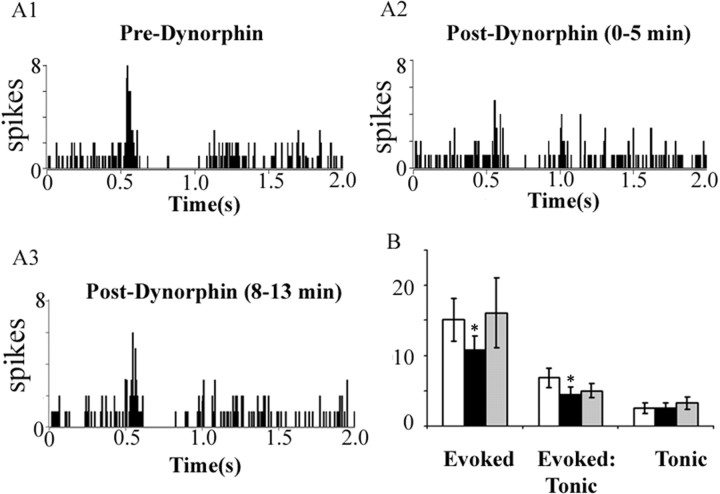Figure 2.
Dynorphin attenuates sensory-evoked LC discharge but does not alter tonic discharge. A1–A3, Representative PSTHs generated from trials of sciatic nerve stimulation before (Pre-Dynorphin), immediately after dynorphin (1 ng in 30 nl) microinfusion into the LC (Post-Dynorphin, 0–5 min), and 8 min after dynorphin infusion (Post-Dynorphin, 8–13 min). The abscissas indicate the time in seconds before and after stimulus, which occurred at 0.5 s. The ordinates indicate the cumulative number of discharges (spikes) in each 8 ms bin. B, Quantification of sensory-evoked discharge (Evoked), signal-to-noise ratio (Evoked:Tonic), and tonic discharge (Tonic). White, black, and gray bars represent determinations before and immediately after dynorphin administration, and 8 min after dynorphin administration, respectively. *p < 0.05, significantly different from predynorphin, Student's t test for matched pair samples (n = 4). Error bars indicate SEM.

